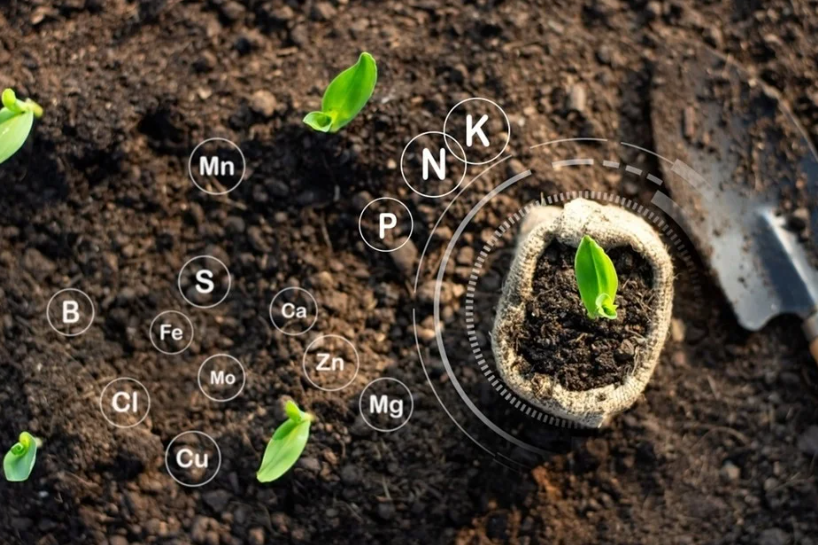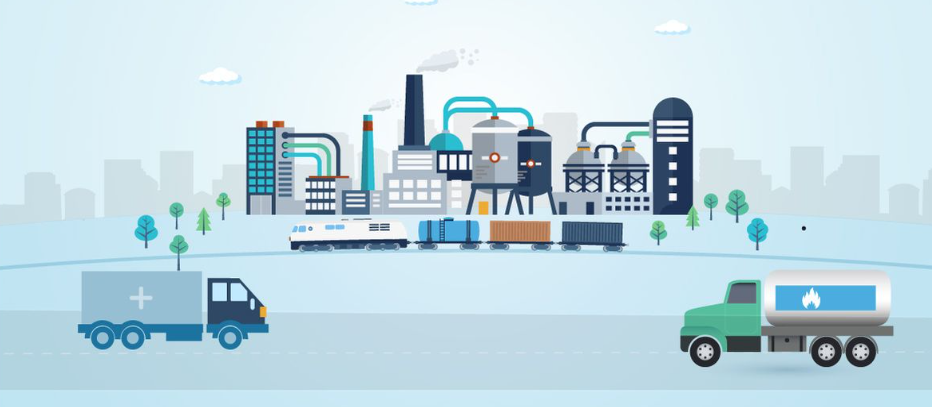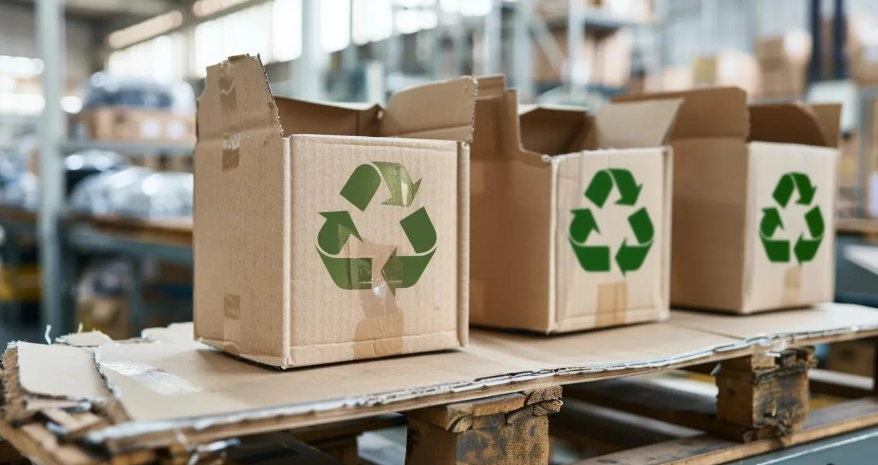Nanotechnology Meets Fertilizers: Are Nano-Enhanced Nutrients the Future?
By 2050, humanity will need to feed an estimated 10 billion people. Yet our current agricultural practices are straining under the weight of this challenge. Conventional fertilizers, while essential to modern farming, operate with shocking inefficiency: only 30-50% of the applied nitrogen and a mere 10-25% of the phosphorus actually reach the crops. The rest? Lost to the environment through leaching, runoff, and volatilization, contributing to water pollution, greenhouse gas emissions, and billions in economic waste.
Enter nanotechnology - the science of manipulating matter at the atomic and molecular scale. What was once the realm of science fiction is now making its way into agriculture, promising to revolutionize how we deliver nutrients to crops. Nano-enhanced fertilizers represent a potential paradigm shift in agricultural inputs, offering unprecedented efficiency and environmental benefits. But are they truly the future of farming, or just another overhyped technological promise?
The Fertilizer Efficiency Crisis
To understand why nano-fertilizers are generating such excitement, we first need to appreciate the significant problems with our current system. When farmers apply conventional fertilizers to their fields, they're essentially playing a game of chance. Nitrogen volatilizes into the atmosphere, phosphorus binds to soil particles, becoming unavailable to plants, and both nutrients leach into groundwater and nearby water bodies.
The environmental consequences are staggering. Agricultural runoff creates massive dead zones in oceans and lakes, where algal blooms fed by excess nutrients deplete oxygen and kill marine life. Meanwhile, nitrous oxide emissions from fertilizer application are nearly 300 times more potent as a greenhouse gas than carbon dioxide.
For farmers, this inefficiency translates directly to their bottom line. They're forced to over-apply fertilizers to ensure adequate plant nutrition, driving up costs and creating a vicious cycle of environmental degradation and economic pressure. The global community has recognized that this cannot continue, spurring the search for smarter, more efficient solutions.
Understanding Nano-Enhanced Fertilizers
Nano-enhanced fertilizers operate at a scale almost incomprehensibly small - between 1 and 100 nanometers, or roughly one-thousandth the width of a human hair. At this scale, materials exhibit unique physical and chemical properties that can be harnessed for precise nutrient delivery.
These fertilizers come in several forms. The first category includes nanoscale nutrients themselves - nitrogen, phosphorus, and potassium formulated as nanoparticles or encapsulated within nanoscale carriers. The second involves nanocarriers, such as nanoclays, carbon nanotubes, or polymeric nanoparticles, that act as delivery vehicles for conventional nutrients. The third type applies nanoscale coatings to traditional fertilizer granules, creating a controlled-release mechanism.
What makes these materials special is their dramatically increased surface area and reactivity. A single gram of nanoparticles can have a surface area exceeding several hundred square meters. This allows for enhanced interaction with plant roots and soil components, while the nanoscale size enables these particles to penetrate plant tissues more effectively than conventional fertilizers.
The Promise: Why Scientists Are Excited
The theoretical advantages of nano-fertilizers are compelling enough to have attracted significant research investment worldwide. The primary benefit is controlled release—rather than dumping all nutrients at once, nano-fertilizers can be engineered to release their payload gradually, matching plant uptake patterns throughout the growing season.
Early research suggests this approach could reduce fertilizer application rates by 30-50% while maintaining or even improving crop yields. Field trials with nano-nitrogen fertilizers have shown yield increases of 15-30% in crops like rice and wheat compared to conventional fertilizers applied at the same rate. When application rates are reduced, nano-fertilizers still match the performance of higher-volume conventional applications.
The environmental benefits extend beyond simple efficiency gains. Controlled release means fewer nutrients available for leaching into groundwater or running off into surface waters. Studies have documented reductions in nitrogen leaching of up to 60% compared to conventional urea fertilizers. This could translate to significantly smaller dead zones, cleaner drinking water, and reduced greenhouse gas emissions from agriculture.
Companies specializing in agricultural chemistry, such as DECACHEM and others in the specialty nutrients sector, are increasingly exploring nanomaterial applications as the technology matures. The economic case for farmers becomes compelling when long-term cost savings from reduced application rates offset the higher upfront cost of nano-formulations.
From Lab to Field: The Current State of Research
The science behind nano-fertilizers isn't purely theoretical - numerous field trials and research projects have demonstrated real-world effectiveness. In rice cultivation, nano-urea formulations have shown particular promise, with studies in India and China reporting yield improvements and significant reductions in fertilizer use. Nano-zinc and nano-iron formulations have proven especially effective in addressing micronutrient deficiencies in crops, with better bioavailability than conventional chelated forms.
One particularly interesting application involves combining nano-fertilizers with precision agriculture technologies. GPS-guided application systems can target specific areas of fields that need nutrient supplementation, while the nano-formulation ensures efficient uptake. This combination represents a multiplication of efficiencies - the right amount of fertilizer, in the right place, delivered in the most effective form.
Research institutions worldwide are racing to optimize formulations for different crops, soil types, and climatic conditions. The results have been promising enough that several countries, including India, have begun pilot programs to introduce nano-fertilizers to commercial agriculture. India's nano-urea initiative, launched in 2021, aims to partially replace conventional urea with nano-formulations across millions of hectares.

The Challenges We Can't Ignore
Despite the enthusiasm, nano-fertilizers face substantial obstacles before becoming mainstream agricultural inputs. The most immediate challenge is cost. Producing nanomaterials requires sophisticated manufacturing processes, specialized equipment, and stringent quality control. Current production costs can be 2-5 times higher than conventional fertilizers, though proponents argue that reduced application rates ultimately deliver cost savings.
Scalability remains a major question mark. Laboratory and small-scale production is one thing; manufacturing millions of tons of nano-fertilizers to meet global agricultural demand is entirely another. The infrastructure doesn't exist yet, and building it represents a massive capital investment that companies are hesitant to make without clear regulatory pathways and market demand.
Then there's the knowledge gap - we simply don't know enough about the long-term environmental fate of nanoparticles in agricultural ecosystems. Do they accumulate in soils? How do they interact with beneficial soil microorganisms? Can they move through food chains and bioaccumulate? Early studies have shown mixed results, with some nanoparticles proving benign and others showing potential toxicity to certain soil organisms at high concentrations.
The regulatory landscape is perhaps the most uncertain aspect. Most countries lack specific regulations for nano-fertilizers, forcing them into existing frameworks designed for conventional agricultural chemicals. This creates confusion about testing requirements, safety standards, and approval processes. Without clear regulations, companies are reluctant to invest heavily in commercialization, and farmers are hesitant to adopt technologies that might face future restrictions.
Environmental and Health: Proceeding with Caution
The potential for unintended consequences demands careful consideration. Nanoparticles behave differently from larger particles of the same material, and their small size allows them to cross biological barriers that would normally exclude larger particles. This raises questions about food safety - if nanoparticles are more readily taken up by plants, do they accumulate in edible portions? Could they present health risks to consumers?
Research into these questions is ongoing but not yet conclusive. Some studies have found minimal accumulation of nanoparticles in plant tissues, while others detected measurable amounts, though typically at levels not considered harmful. The variability depends on the specific nanomaterial, crop type, soil conditions, and application method.
The impact on soil ecosystems is another area requiring more investigation. Soil health depends on complex communities of bacteria, fungi, and other microorganisms. Some research has indicated that certain nanoparticles can disrupt these communities at high concentrations, potentially affecting nutrient cycling and soil fertility over time. However, other studies have found no significant effects, highlighting the need for long-term, comprehensive field studies.
The precautionary principle suggests we should be cautious about widespread adoption until these questions are answered. Yet the urgent need for more efficient agricultural practices creates pressure to move forward. Finding the right balance between innovation and caution will be critical.
Charting the Path Forward
The future of nano-fertilizers will likely be determined by several converging factors. First, regulatory frameworks need to be established that provide clear guidance while remaining flexible enough to accommodate this rapidly evolving technology. The European Union has been working on nano-specific regulations for agricultural products, which could serve as a model for other regions.
Research priorities must focus on filling knowledge gaps, particularly regarding environmental fate, ecosystem impacts, and long-term effects. Public funding for independent research will be crucial, as will transparency from companies developing these products. Farmers need to trust that these technologies have been thoroughly vetted before they adopt them at scale.
Industry developments suggest growing confidence in the technology. Investment in nano-fertilizer startups has increased, and established agricultural chemical companies are expanding their nanotechnology research programs. Production costs are expected to decrease as manufacturing processes improve and scale up, potentially making nano-fertilizers cost-competitive with conventional options within the next decade.
Integration with precision agriculture and smart farming technologies will likely accelerate adoption. When nano-fertilizers are part of a comprehensive digital farming system - with soil sensors, drone monitoring, and AI-driven application recommendations - their benefits are maximized while risks can be better managed through targeted, optimized use.
Conclusion: A Promising Tool, Not a Silver Bullet
Are nano-enhanced fertilizers the future of agriculture? The answer is nuanced: they're likely to be an important part of the future, but not the entire solution. The technology shows genuine promise for addressing critical inefficiencies in current agricultural practices, with potential benefits for yields, economics, and the environment.
However, significant questions remain about long-term safety, environmental impacts, and practical scalability. The path forward requires continued rigorous research, development of appropriate regulatory frameworks, and transparent communication about both benefits and risks.
The agricultural challenges facing humanity are too complex for any single technology to solve. Nano-fertilizers should be viewed as one tool in a larger toolkit for sustainable agriculture - alongside precision farming, improved crop varieties, soil health management, and agroecological practices.
What's needed now is collaboration among all stakeholders: scientists conducting unbiased research, companies developing products responsibly, regulators creating sensible frameworks, farmers sharing practical insights, and consumers demanding sustainable food production. Only through this collective effort can we determine whether nanotechnology will truly revolutionize fertilizers or remain a niche application.
The potential is undeniable. Whether that potential is realized depends on the choices we make today about research priorities, regulatory approaches, and the values we want to guide agricultural innovation. The conversation about nano-fertilizers is ultimately a conversation about what kind of agricultural future we want to create - one that feeds the world while protecting the planet that sustains us all.
















